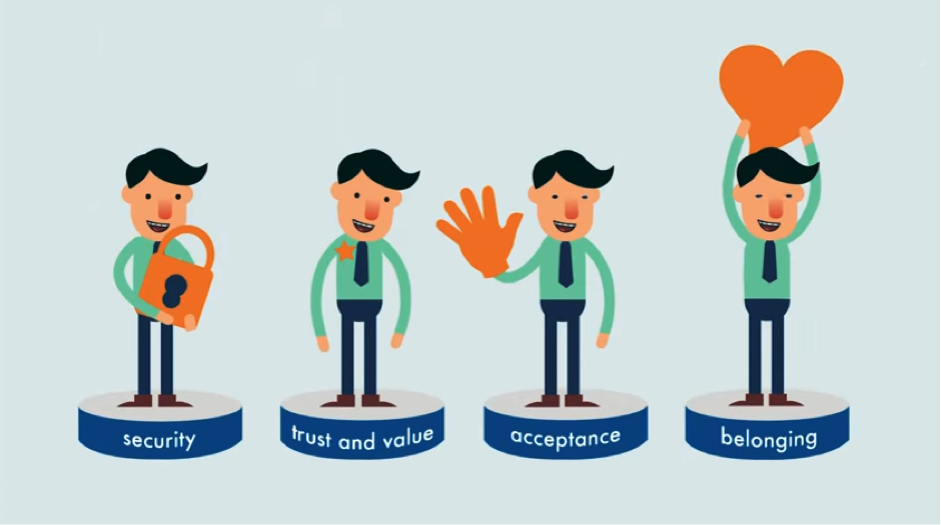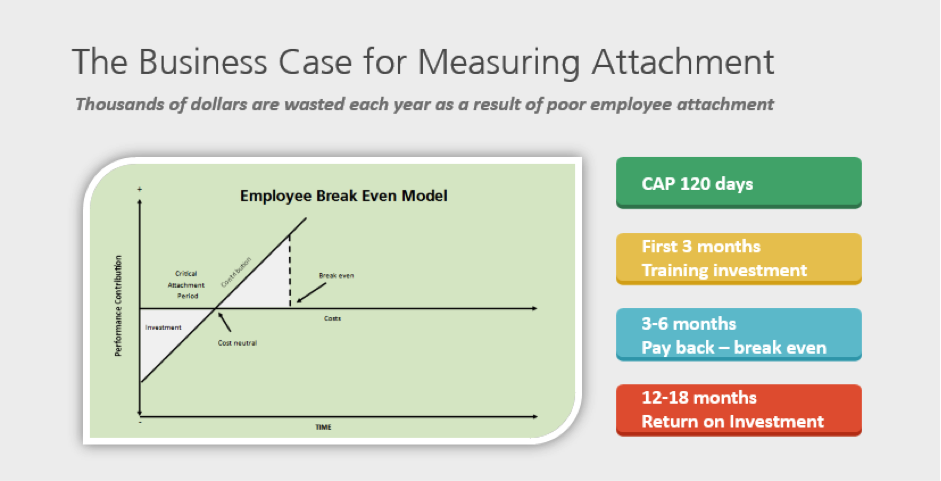The Difference between Attachment and Engagement
We often get asked when first talking to our prospective clients about the difference between the Employee Attachment Inventory (EAI) and an On-Boarding Survey. We also get asked why an organisation who already has an engagement or pulse survey would also use the EAI. I thought I would write this quick post to highlight the differentiators and key benefits of using the EAI.
Firstly – What is the difference between the EAI and an On-Boarding Survey?
Many organisations have an on-boarding or post induction survey in place. This is a great start because clearly these organisations see the value in understanding how their new recruits are experiencing their first few weeks and months. However, often the way the information is gathered, the quality of the information and indeed how it is used are all areas that can be significantly improved.
The EAI is built around the 4 pillars of Attachment (based on Attachment Theory and research) – these are Security, Trust & Value, Acceptance and Belonging. The EAI, which is a valid and reliable psychometric instrument designed specifically to measure Attachment – does this using properly built survey methodology based on 20 workplace drivers.
The EAI (report) presents the results in the form of a consultative report which is designed to help the manager of a new employee understand their own behavioural impact on Attachment perceptions and importantly what the manager can do to strengthen Attachment of the new employee within the critical Attachment period (first 120 days).
The EAI is designed to help both the Employee, the Manager and the Organisation by shaping and improving the new hire experience. This in turn will lead to improved retention and performance of new talent. Having a basic survey is better than nothing, but being able to accurately measure and actively manage the levels of Attachment of new hires will result in a much better experience for the employee, the manager and the organisation.
Attachment vs Engagement and the difference?
Engagement is an umbrella term for understanding how emotionally aligned a total workforce is at a given point in time. Engagement surveys take a broad brush approach to measurement, where people of varying roles and tenure would be invited to respond. The EAI specifically measures “Attachment” which is a unique and clearly defined phase of the employment life cycle. It is a subset of Engagement and is easier to think of as the foundation or base-line of Engagement.
Attachment describes the strength of bond between a new hire and the organisation during the Critical Attachment Period (120 days), whereas Engagement is not bound by a specific tenure based timeframe. Where you may measure Engagement on the 15th of November for the whole organisation, you must measure Attachment at the 90th day of employment for a new employee. Measuring Attachment will take place consistently throughout the year based on the start date of each new employee.
Attachment perceptions are influenced by a specific set of drivers, some of which are common to Engagement – others are not (e.g. Incremental Learning, Recruitment & Selection, Pre-Employment, Orientation, Accuracy of Job Description). Attachment levels at the 120 day mark set the resting point or base line for Engagement for the next phase of the employee life cycle called Alignment. This is usually the longest phase of an employee life cycle and is actually commonly labelled Engagement. High levels of Attachment correlate with high levels of Alignment/Engagement; low levels of Attachment correlate with low levels of Alignment/Engagement.
The key to this is understanding the relationship between discretionary effort and performance. Where new recruits feel a strong sense of Security, Trust & Value, Acceptance and Belonging, they are less likely to resign in their first 18 months, and more likely to perform at a high rate through discretionary effort… They are also more likely to reach minimum performance standards at a faster rate.
You measure Attachment during the Critical Attachment Period (120 days). You measure Alignment/Engagement during the next and longest phase of the employment life cycle and you measure Detachment when they enter the next phase. Each needs to be measured and managed separately to gain the greatest level of understanding and the greatest level of control regarding employee perception and their impact on performance.
To get a great sense of the benefits of measuring Attachment and Detachment, please contact us for a complimentary trial or pilot by registering on our website or email us at info@shcBOND.com.
Watch our video.
Selina Sork
CEO shcBOND





No Comments